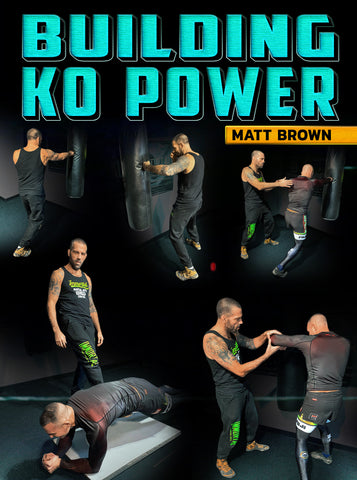Dutch Kickboxing vs. Muay Thai
In the realm of striking arts, Dutch Kickboxing and Muay Thai stand as two of the most formidable disciplines, each with its own rich history, techniques, and philosophies. As practitioners and enthusiasts debate the merits of each, it's essential to delve into the nuances that distinguish Dutch Kickboxing from Muay Thai. In this blog post, we'll explore the differences and similarities between these two striking styles, address the perennial question of which is better, and discuss the ease of learning Dutch Kickboxing versus Muay Thai.
What this article covers:
- Difference Between Dutch Kickboxing and Muay Thai
- Similarities Between Dutch Kickboxing and Muay Thai
- Which Is Better: Dutch Kickboxing or Muay Thai?
- What Is Easier to Learn: Dutch Kickboxing or Muay Thai?
The connection between Dutch Kickboxing versus Muay Thai and other martial arts such as Karate, Judo, Lethwei, MMA, and Kickboxing lies in the diverse interactions and influences within the world of combat sports. Dutch Kickboxing, with its emphasis on fast-paced striking combinations and movement, shares similarities with Karate in terms of precision and focus on technique. Conversely, Muay Thai's clinch work and devastating strikes provide a contrast to the throwing techniques of Judo. In comparing Muay Thai with Lethwei, the inclusion of headbutts and aggressive fighting styles sets Lethwei apart, showcasing the unique cultural influences within each discipline. Meanwhile, MMA combines various martial arts, including Muay Thai, into a comprehensive combat system, highlighting the integration and versatility of Muay Thai techniques. Lastly, while Kickboxing shares similarities with Muay Thai in terms of striking, Muay Thai's incorporation of elbows, knees, and clinch work distinguishes it as a distinct discipline within the striking arts landscape. These connections underscore the rich tapestry of martial arts and the continual evolution and adaptation of combat techniques across different disciplines.
Learn the best striking techniques at DynamicStriking.com!
Difference Between Dutch Kickboxing and Muay Thai
- Stance and Movement: Dutch Kickboxing typically employs a more upright stance with faster footwork and lateral movement, whereas Muay Thai fighters often adopt a more squared stance with less lateral movement to facilitate powerful strikes and clinch work.
- Technique Emphasis: Dutch Kickboxing places a strong emphasis on punching combinations, low kicks, and head movement, while Muay Thai incorporates a wider variety of strikes, including punches, kicks, elbows, and knees, along with clinch techniques and sweeps.
- Clinch Work: Muay Thai extensively utilizes the clinch for controlling opponents, throwing knees, and setting up strikes, while Dutch Kickboxing tends to focus less on clinch work and more on striking combinations and movement.
Similarities Between Dutch Kickboxing and Muay Thai
- Striking Proficiency: Both Dutch Kickboxing and Muay Thai prioritize effective striking techniques, precision, and timing, making them dynamic and captivating to watch and practice.
- Conditioning: Training in both disciplines promotes physical fitness, endurance, and mental toughness, preparing practitioners to perform under pressure and maintain a high pace throughout a fight.
- Practical Application: Dutch Kickboxing and Muay Thai techniques are applicable in various combat scenarios, ranging from self-defense to competitive fighting, making them valuable martial arts for practitioners of all levels.
Which Is Better: Dutch Kickboxing or Muay Thai?
Determining which martial art is "better" between Dutch Kickboxing and Muay Thai is subjective and depends on individual preferences, goals, and circumstances. Dutch Kickboxing may be preferable for those seeking fast-paced striking combinations, head movement, and lateral footwork, whereas Muay Thai offers a more comprehensive skill set that includes a wider array of strikes, clinch work, and defensive techniques. Ultimately, the best martial art for you is the one that aligns with your goals, preferences, and strengths as a practitioner.
What Is Easier to Learn: Dutch Kickboxing or Muay Thai?
The ease of learning Dutch Kickboxing versus Muay Thai can vary depending on factors such as individual athleticism, coordination, and previous martial arts experience. Some may find Dutch Kickboxing's emphasis on punching combinations and head movement more intuitive, particularly if they have experience in boxing or other striking arts. Others may gravitate towards Muay Thai's comprehensive approach to striking, clinch work, and defensive techniques, appreciating its depth and versatility. Ultimately, the learning curve for both martial arts depends on the individual's dedication, commitment, and willingness to learn.
Learn the best striking techniques at DynamicStriking.com!
Conclusion: Dutch Kickboxing and Muay Thai represent two iconic striking arts with distinct yet complementary skill sets. Whether you're drawn to Dutch Kickboxing's fast-paced combinations and head movement or Muay Thai's comprehensive striking arsenal and clinch work, both disciplines offer a rewarding journey of self-discovery, skill development, and personal growth. Ultimately, the true beauty of martial arts lies not in determining a winner but in embracing the diversity and richness of the combat sports world.
Did our blog meet your needs? You might also find our other guides helpful:
- Muay Thai vs. Tae Kwon Do
- Muay Thai vs. Jiu-Jitsu
- Muay Thai vs. MMA
- Muay Thai vs. Krav Maga
- Muay Thai vs. Kung Fu
- BJJ vs. Muay Thai
- Wing Chun vs. Muay Thai
- Muay Boran vs. Muay Thai
- Demystifying Muay Thai Kickboxing
- Unveiling the Secrets of Muay Thai Fitness
- Unveiling the Art of Muay Thai Weapons
- Decoding the Bang Muay Thai Ranking System
- Mastering Muay Thai Pad Work
- Unlocking the World of Muay Thai
- The Ultimate Guide to Top Tips and Tricks











